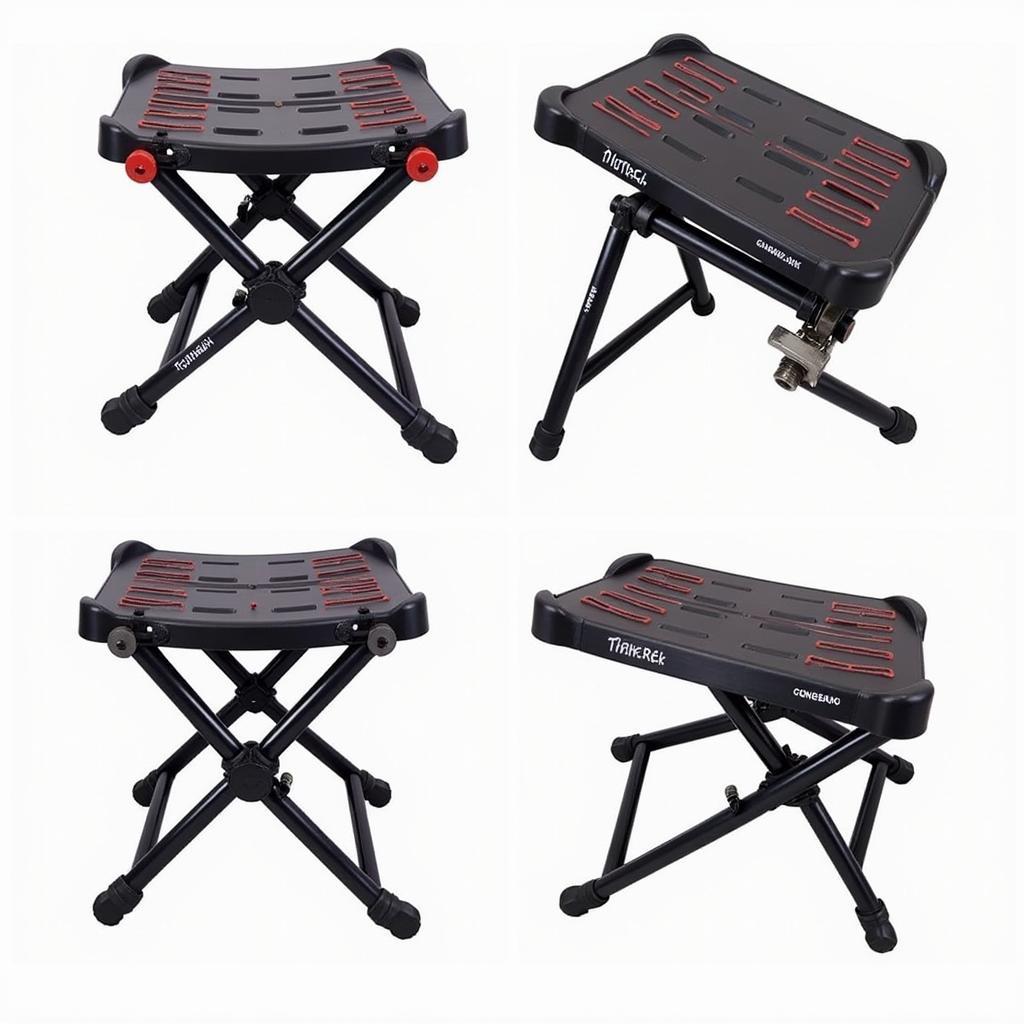An auto service creeper is an essential tool for any mechanic, whether professional or DIY enthusiast. Choosing the right one can significantly impact your comfort, efficiency, and ultimately, the quality of your work under a vehicle. This guide will explore everything you need to know about auto service creepers, from different types and features to essential selection criteria and maintenance tips.
Types of Auto Service Creepers
Mechanic’s Creepers
 Standard Mechanic's Creeper
Standard Mechanic's Creeper
The most common type, the mechanic’s creeper, offers a simple, low-profile platform on four swivel casters. These are generally affordable and suitable for basic tasks. They are usually padded with vinyl or a thin layer of foam.
Padded Creepers
 Padded Creeper for Extra Comfort
Padded Creeper for Extra Comfort
If comfort is a priority, padded creepers offer thicker, more contoured cushioning, often made of denser foam or even gel. They frequently include a more substantial headrest, making them ideal for extended work under a vehicle.
Convertible Creepers/Stools
 Convertible Creeper/Stool for Versatility
Convertible Creeper/Stool for Versatility
For versatility, convertible creepers can transform into mechanic’s stools. This dual functionality is excellent for tasks that require both rolling under a vehicle and sitting upright.
Key Features to Consider
When selecting an auto service creeper, consider the following:
- Weight Capacity: Ensure the creeper can support your weight and any tools you might be carrying.
- Material: Steel frames are durable, while plastic frames are lighter and more resistant to corrosion.
- Padding: Thicker padding generally provides more comfort. Look for breathable materials to minimize sweating.
- Caster Type: Ball-bearing casters offer smoother rolling and maneuverability. Consider the floor surface in your garage – larger casters are better for uneven floors.
- Size and Dimensions: Consider the available space in your garage and the height of your vehicles. A low-profile creeper is crucial for working under low-clearance cars.
Maintaining Your Auto Service Creeper
Regular maintenance can extend the lifespan of your creeper.
- Clean the casters: Remove debris and hair that can hinder rolling.
- Lubricate the casters: Apply lubricant to ensure smooth movement.
- Inspect the padding: Check for tears or wear and replace if necessary.
- Store properly: Keep your creeper in a dry, clean area to prevent rust and damage.
How to Choose the Right Auto Service Creeper for You?
Choosing the right creeper depends on your individual needs. Ask yourself these questions:
- How often will I be using the creeper?
- What types of repairs will I be performing?
- How important is comfort?
- What is my budget?
Choosing an Auto Service Creeper: A Professional’s Perspective
John Davis, a seasoned automotive technician with over 20 years of experience, offers his insights: “A good auto service creeper is an investment in your comfort and efficiency. Don’t skimp on quality. Look for a creeper that’s sturdy, well-padded, and has smooth-rolling casters. It will make a world of difference in your work.”
Finding the Perfect Balance: Comfort vs. Functionality in Auto Service Creepers
Another expert, Sarah Miller, an ergonomics specialist, emphasizes the importance of comfort: “Prolonged work under a car can strain your back and neck. Investing in a creeper with adequate padding and support can significantly reduce these risks and improve your overall work experience.”
Conclusion
An auto service creeper is an indispensable tool for any automotive enthusiast or professional. By considering the factors discussed in this guide, you can choose the right auto service creeper to enhance your comfort, efficiency, and overall work experience.
FAQs
- What is the weight limit of a typical auto service creeper? Most creepers have a weight capacity between 300-400 lbs.
- What type of casters are best for smooth rolling? Ball-bearing casters are generally considered the best for smooth rolling.
- How can I maintain my creeper? Regularly clean and lubricate the casters and inspect the padding for wear and tear.
- What are the different types of creepers available? Common types include mechanic’s creepers, padded creepers, and convertible creepers/stools.
- How do I choose the right creeper for me? Consider factors like frequency of use, type of repairs, comfort level, and budget.
- Can I use an auto service creeper on uneven surfaces? Larger diameter casters are recommended for uneven surfaces.
- What materials are creepers commonly made of? Steel and plastic are common materials for creeper frames.
Need help choosing the right auto service creeper? Contact us via WhatsApp: +1(641)206-8880, Email: [email protected] or visit us at 321 Birch Drive, Seattle, WA 98101, USA. Our 24/7 customer support team is ready to assist you.


